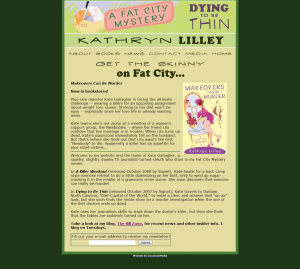Here at TKZ we sometimes joke about “shameless self-promotion.” We greatly appreciate the good rapport we have with our readers, and you all know we are not here just to plug our stuff. But you also understand that we’re working writers who blog, in part, so we can tell you about our new releases when they occur.
Every writer has to do it. Publishers and agents demand it. If you’re self-publishing, you can’t survive without some form of social media and self-promotion.
Yet many authors feel uncomfortable tooting their own horns. Let me assuage that discomfort.
Self-promotion need not be “shameless,” and indeed can be a benefit to all, if you remember one simple thing: the Law of Reciprocity. This law holds that when you offer something of value to another, they are much more likely to give something in return.
In social media, for example, the Law of Reciprocity is golden. Many an author makes the mistake of thinking social media is about marketing. In reality it’s about relationships. You build those slowly, through actual engagement, and not by stringing together a bunch of posts that are little more than “buy my stuff” pleadings.
For a couple of years I’ve monitored some authors on Twitter who make a fundamental mistake. Thinking it’s just a “numbers game,” they hit the Twitterverse with thinly veiled sales pitches, over and over and over. Is that value?
Sometimes I see virtual begging. “Please RT this! Please!” But why would I do that if I don’t see any value in it? Why would I want to send that along to my own network?
I note that these methods have not helped their sales. (The books themselves probably have something to do with it, but I’ve not been interested enough to read one.)
On the other hand, some authors (Joseph Finder comes to mind) do it right, giving us interaction, interesting links, a laugh or two and so on. When he announces a new release, he’s earned trust. I’m happy to hear about it.
So think reciprocity. Give, and you will receive. Don’t just toot your own horn, make some music with it.
I’ll have multiple releases this year—traditional, self-published, short form. What I’d like to do here is turn those into occasions to offer something to writers. I’ll focus in on an aspect of the craft that went into the work, or maybe a bit of backstory about how a particular story sprang to life. Whatever seems apt.
Now that is one beautiful cover. This is what a traditional publishing house like Kensington has going for it—hugely talented designers who do this for a living. The tagline: More Demons, Less Filling, is also brilliant. A designer and a copywriter worked in tandem to produce this stunner.
It does what a cover should do: it feels like a visual representation of the tone of the book. That is not an easy thing to accomplish. And here I must say a word to all you self-publishers:
Do not skimp on your cover art! Spend money and hire someone who knows what they’re doing. In this digital age there is an expanding number of people who can design you a nice cover. Find them. Get recommendations. Look at their portfolios. Get a quote from them. And then do the following:
1. Give them an idea of how you want the cover to look. You do this by going on Amazon or Barnes & Noble and looking for covers in your genre. You collect a number of these that resonate with you and put them into a PDF to send them to your designer.
2. Provide the cover artist with a short squib about your book. Most of the time this should be the book description that you’ve written, just like a copywriter (another fine art I’ll talk about sometime).
3. Ask for a deal that includes at least a revision and a polish. You use the revision to clear up any misconceptions or things you don’t like. The polish is the fine tuning aspect. Try to negotiate this as part of the fee.
4. How much should you pay? There are artists all over the map, but generally between $200 – $400. I know about one poor fellow who spent $2,000 on a cover, which did not look worth it at all. Be very careful about assessing the worth of your artist.
5. If you have several books being readied, ask the cover designer for a package deal and a discount.
Now, there are some of you out there who have design talent, and know how to use photo and illustrator programs, who might want to Do-it-Yourself. If so, let me encourage you to put your cover through as rigorous a design process as you put your book through a revision process. Get feedback from people. Do two or three designs of your cover and have people select which one they like best.
Also: be sure your book cover has the dimensions of a physical book. It shouldn’t look square and squat like this:
And can you see another major mistake? Your cover should not have the word “by” in front of your name.
Instead, your cover should look like this:
So there you have it. Toot your own horn and add value doing so, and you’ll never be an unwelcome guest.
As for covers, if you’re traditionally published, how have you liked yours? How much input did your publisher give you?
If you’re self-published, what have you done to get good covers for your books? What did it cost you?







